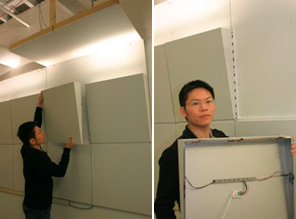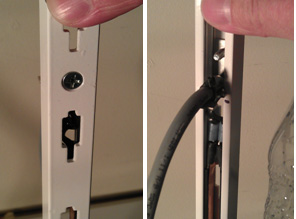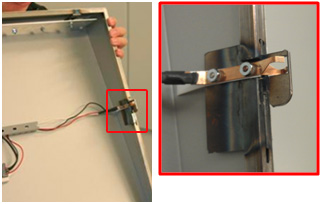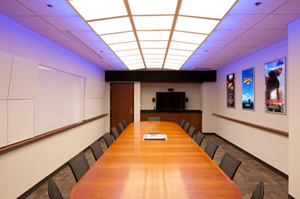Electronic Walls and Ceilings Offer Adaptable Solid-State Lighting (2012)
What if building architecture and lighting could be seamlessly integrated to create illumination that is dynamic, personal and flexible? What would it look like?
Over the past 100 years, traditional lighting has acted as an add-on to spaces. Lighting fixtures are hung from ceilings, sit on floors, and rest on tables. Solid-state lighting, however, offers new ways to think about how we light our spaces. This rapidly evolving technology can be embedded into any type of architecture due to its small size, ruggedness, and long life. Its numerous color options and acceptance of dynamic control can create a personal lighting experience to meet any task or ambiance.
Working Toward an Infrastructure Change
In 2004, the Alliance for Solid-State Illumination Systems and Technologies (ASSIST) provided seed money to develop and demonstrate a flexible interior infrastructure that will integrate solid-state lighting with other building materials and systems. Such an infrastructure would allow for rapid reconfigurations of built-in lighting, making it as easy to redesign lighting as it to move furniture—no need to drill holes, patch drywall, call an electrician, or lay out the room according to where the electric sockets are installed.
Concept and Design
In 2005, LRC researchers designed and built a full-scale vignette of an executive office at the LRC to showcase the concept for adaptable lighting and to demonstrate the value in easily changing lighting design. The ceiling and walls consisted of thin LED-lighted panels ("future tiles") that snapped in and out of a modular direct current (DC) electrical grid and provided different lighting distributions, including general, task, accent and decorative. The panels could be rearranged simply and rapidly to cater to changing room layouts or personal preference. For example, accent lighting built into a panel could move as easily as the artwork it highlights. The LED panels were controlled by a touch-screen monitor mounted on the wall.
|
|
| An LRC researcher "snaps" an LED panel into the electrical grid. |
The panels can be rearranged simply and rapidly to cater to changing room layouts or personal preference. |
Field Demonstration and Evaluation
In 2009, the California Energy Commission awarded project funding to the LRC to demonstrate this new infrastructure for SSL technology. Along with project partner OSRAM Sylvania, the LRC installed a prototype system in a conference room at a Hollywood movie studio. (Read the full case study.)
System Components of the Field Demonstration Prototype
The field demonstration consists of a changeable wall tile grid system that includes LED lighting. The wall tiles are composed of an LED lighting fixture, a controller, and a hook that can be used for electrical connection, which runs at 24V DC. A custom frame and bracket system accommodates the tiles, which were purchased commercially and retrofitted to house the lighting components. The lighting fixtures are controlled by a wireless switch, and all components are integrated into the wall grid system. The power to the grid is provided from a power module through normal wires. To use or change the wall tile fixture, simply push and take down the tile, as shown. The lighting fixture can be placed at any location on the grid. To change the layout of the lighting, the wall tiles can easily be taken down and moved to any location, as long as the wall tile hook can be connected to the electrical grid.
 |
The wall tiles are composed of an LED lighting fixture, a controller, and a hook that can be used for electrical connection, which runs at 24V DC. To change or move the wall tile fixture, simply push and take down the tile, as shown. |
 |
An electrified frame and bracket system accommodates the tiles, and DC power is run through the grid system. |
 |
A hook, as shown in the enlarged image (above right), connects the LED fixture tile to the power grid and feeds DC power to the light source. |
 |
Field demonstration of a prototype system installed in a conference room.
(Photo credit: Tom Bonner Photography) |
Sponsors and Project Partners
California Energy Commission's PIER Building Energy Research Grant
OSRAM Sylvania
Paramount Pictures
ASSIST
Media Coverage
The Future of Flexible Architectural Lighting – LRC News, June 2013
Modular LED Tiles Show Promise for Offices, Study Finds
– LD+A, July 2013
OSRAM and LRC partner on Paramount Pictures SSL project – LEDs Magazine, July/August 2012, pg. 9
Lights of the Future – Discoveries and Breakthroughs Inside Science, 2005
ASSIST group develops snap-in scheme for LED lighting – LEDs Magazine, December 2005
 Modular LED Panels – WRGB News Channel 6, December 2005 Modular LED Panels – WRGB News Channel 6, December 2005
Electronic Walls and Ceilings – LRC Newsletter, January 2006
|


